I'm chronically ill – this 1 simple low-energy daytime bedroom hack stops pet hair and dander from triggering my allergies at night
It reduces the need daily bedding changes


I love nothing more than hearing my two cats purring away next to me. However, I am, rather inconveniently, allergic to their dander, which is why it’s important to keep them off my bed.
However, it's their favorite spot to snooze, and I sometimes forget to shut the door. As I am chronically ill, limited in mobility and dealing with high pain and fatigue daily, I don’t always have the energy to remove and wash my king size bedding after catching my feline friends napping on it.
The solution isn’t to somehow make doing the laundry easier, but instead a nifty little trick I came up with out of desperation, and cleaning experts agree that using a large throw on top of my bedding is a winning solution.
Why using a throw works to reduce pet dander allergy triggers
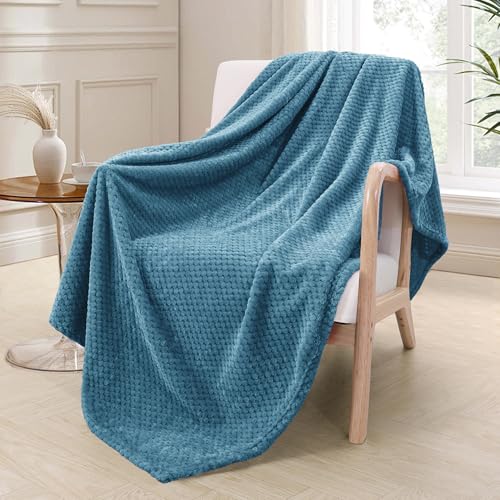
I use a throw just like this one, which is machine washable, lightweight and fade-resistant on my bed. It saves me from having to remove and wash my super king bedding daily fur ends up on it. It air dries super quickly.
Simply put, using a throw keeps my cats from making direct contact with my pillow case or bedding. This helps keep their fur, dander, and any dust or microbes they’ve collected on their fur off bedding, and means I only have to change my bedding once or twice a week, instead of removing and washing daily.
I use a large machine washable throw, much like this lightweight, fade-resistant and machine washable throw from Amazon for ease.
Dr Aimee Warner, veterinarian at Waggel, explains why dander triggers allergies, and why my throw tip is a good workaround.
Dr warner says, 'Fel d 1 stands as the primary allergen present in cats since it exists within their saliva and skin, together with sebaceous gland secretions. When cats groom themselves, the protein ends up on their fur and skin before becoming airborne as tiny dander particles. Fel d 1 particles stay in homes even after thorough cleaning because they weigh very little and bond with fabrics and surfaces.'
Design expertise in your inbox – from inspiring decorating ideas and beautiful celebrity homes to practical gardening advice and shopping round-ups.
That's especially true with cats prefer to resting on warm and safe places with human scents. Dr Warner explains, 'Your bed has these elements. The strong scents on your pillow and bedding create feelings of security which make your cats feel at ease.'
This is why the majority of cats will rest in areas that provide 'both physical and emotional closeness to their owners, even though they have designated sleeping places.'
It's one of the challenges of keeping a home with cats clean, and why I use the Mr.siga sticky lint rollers from Walmart obsessively across my home multiple times a day.
As for the throw, and whether it's enough of a barrier in the daytime to prevent nighttime allergies, Dr Warner says, 'The use of a throw that can be washed proves to be an effective solution. The item functions as a protective layer that traps dander and saliva and fur particles before they reach your primary bed layers.
'Regular hot water washing of your throw should minimize allergens while decreasing symptoms during nighttime hours.'
Longer term solutions for pet dander on beds
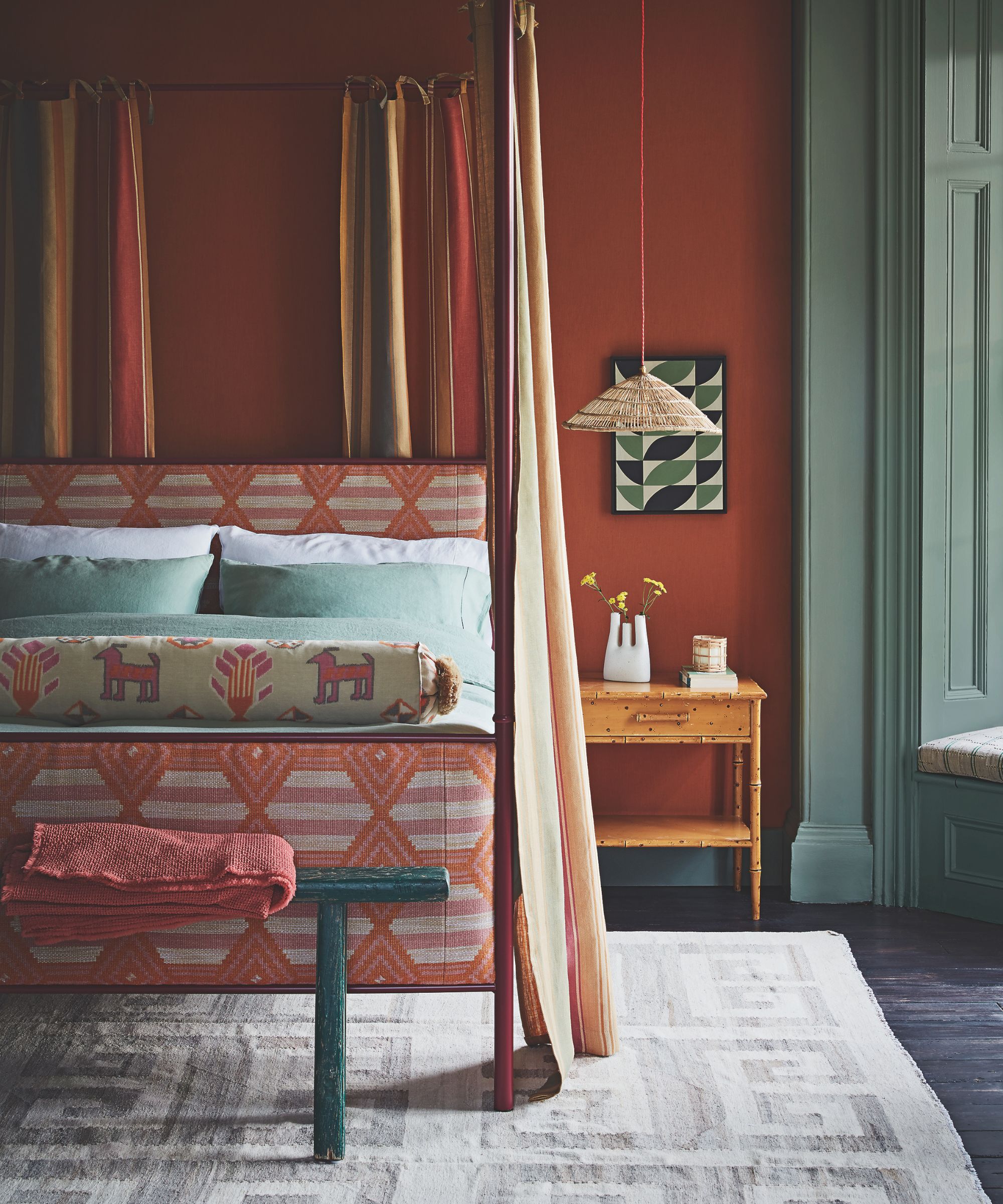
Using throws on your bed reduces the need to wash all of the bedding when your pets nap on it. Instead, wash the throw.
Whilst the throw is a simple and effective solution, in the longer term, you may find air quality solutions a deeper fix.
Dr Warner shares some of the dander challenges present, adding, 'The dander from cats stays active in the air and sticks to soft materials for extended periods of time.
'Dander from your cat remains present in your bedroom even when your pet stays outside the room because it clings to clothing and enters through open doors. The exposure can be minimized through reduced textile usage, along with allergen-proof covers and proper ventilation.
Dan Fauzi, Home Tech Editor at Homes & Gardens, and sufferer of asthma and allergies, adds, ‘The throw is a great, easy interim measure, but for long-term allergy reduction, I recommend investing in one of the best air purifiers. They're widely known to be one of the most, if not the most, effective ways of removing allergens from a space.
‘As somebody who's allergic to dust, pollen, dander, and seemingly everything else, I can confirm that running an air purifier in the bedroom daily for the last year has almost eliminated my symptoms.’
Dan uses the Molekule Air Mini+ in their bedroom and the Shark NeverChange MAX in their living room and found this reduced allergy and asthma flares to nearly none.
Dr Warner confirms this is a supremely effective addition to any household with pets, and especially for owners with allergies.
She says devices with HEPA filtration work well, adding, 'These devices excel at trapping airborne dander and allergens when placed in active rooms, including bedrooms. Air purifiers serve as a valuable addition to cleaning routines and allergen control strategies for improving home air quality.
If you're worried about the cost, our home tech editor recommends a budget option such as the Coway Airmega Aim, available at Walmart, that we've tested and loved.
Pet hair removal essentials
All prices were correct at the time of publication.
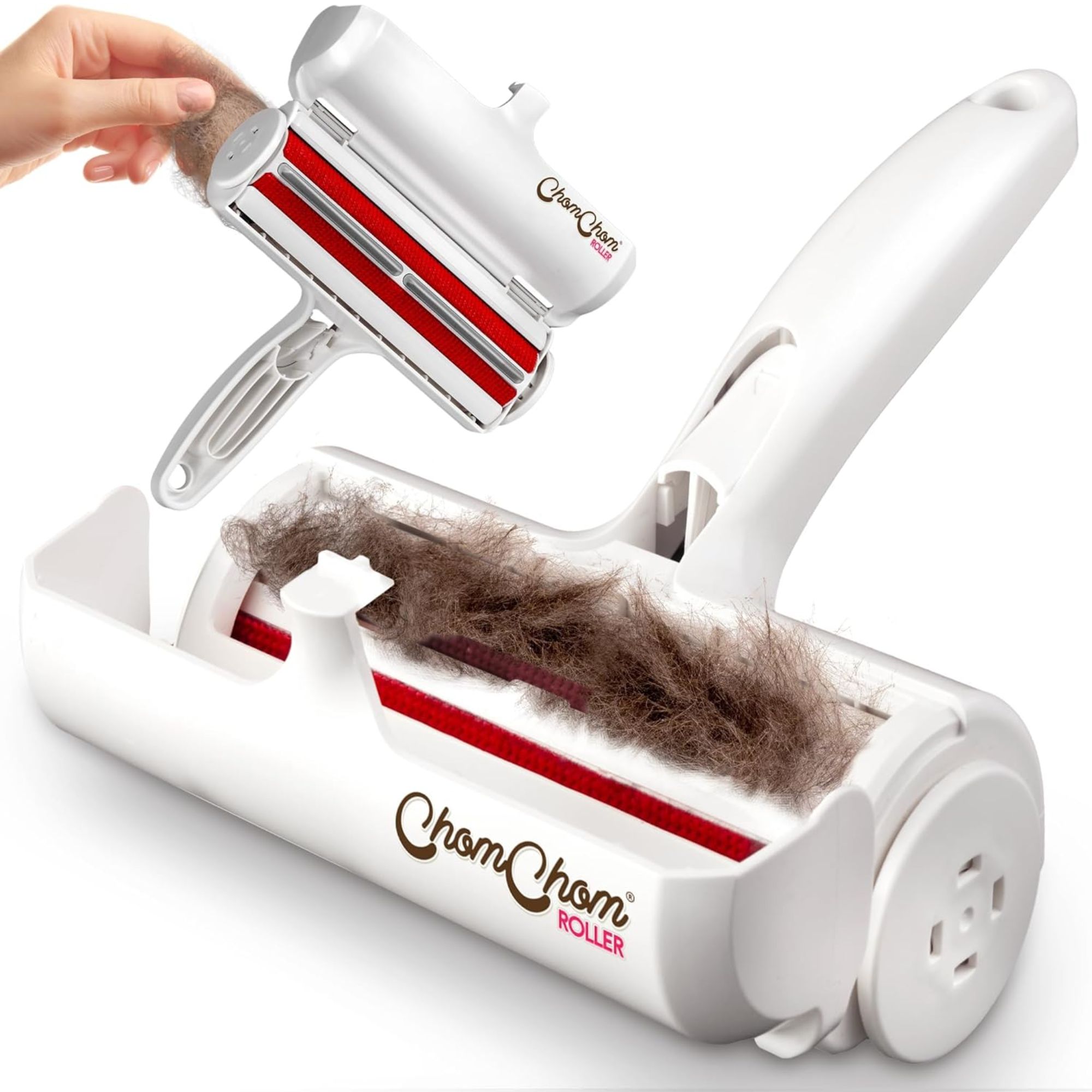
For a sustainable way to remove pet hair from fabrics daily, a reusable lint roller comes in handy. This one has a compartment that collects the loose hair, and can be opened at the touch of a button, so loose hair can be tipped into the trash.
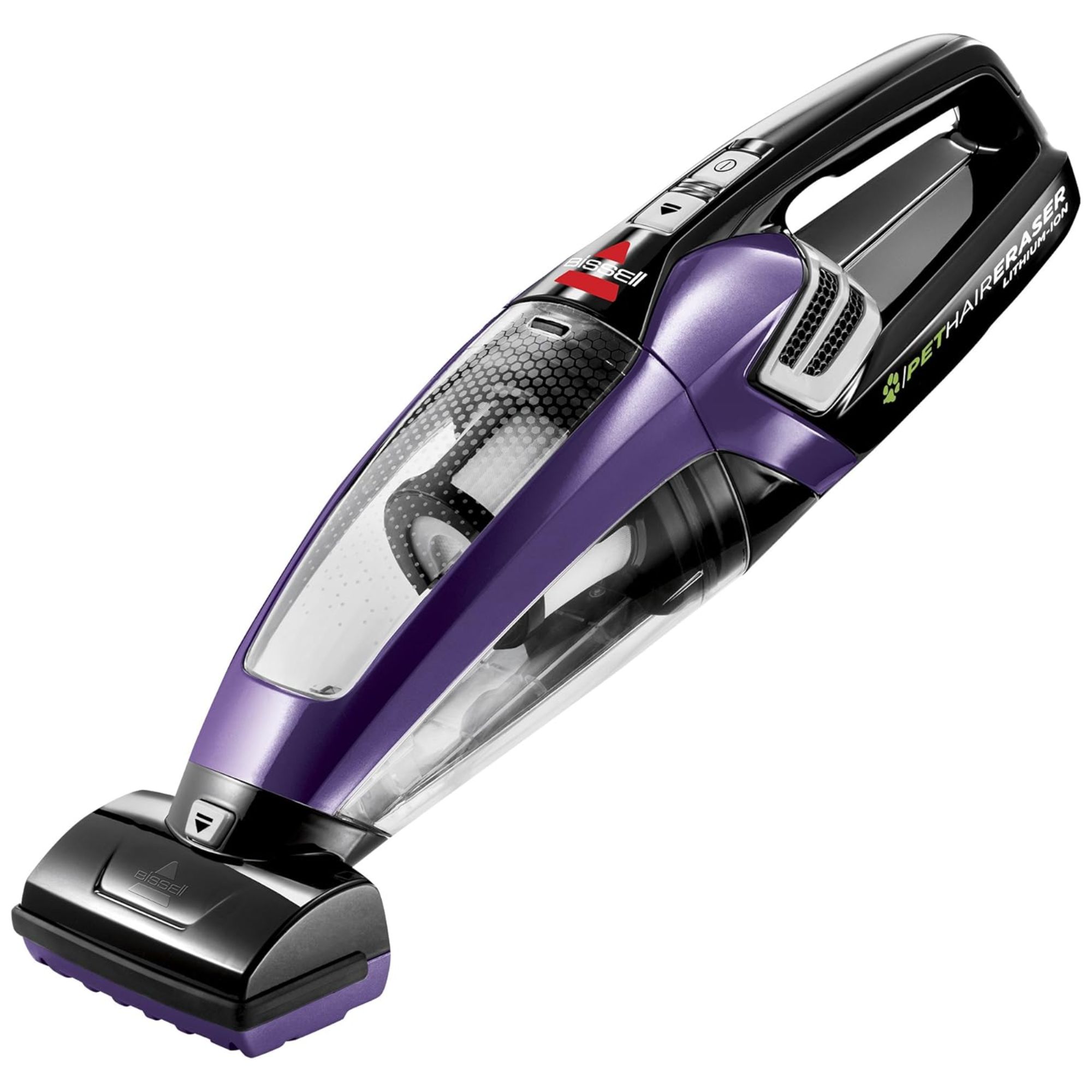
This nifty little handheld vacuum works well for removing embedded dirt and pet hair, making use of a motorized brush tool for extra cleaning power.
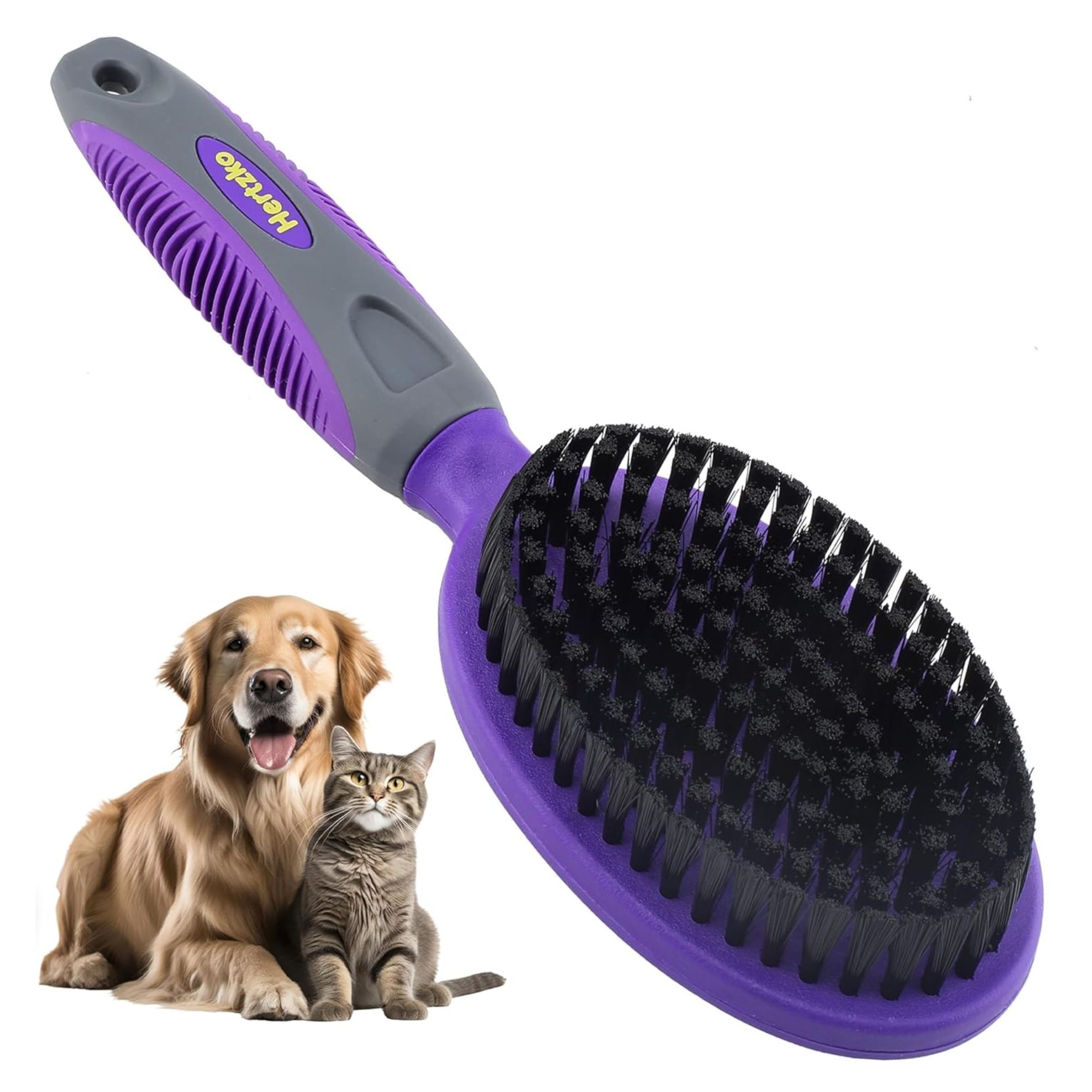
They say prevention is better than a cure, and brushing your pets daily can help reduce rogue fur loss over your bed and upholstered areas. Designed for animals with long hair, this soft brush will help gently remove knots.
Meet the experts

Dan has been testing home tech since 2021, spending more than 200+ hours on vacuums alone. They also oversee our team of internal and contributing testers, including more than 100+ team hours spent thoroughly reviewing the best air purifiers on the market, including in their own home.

Aimee Warner is the resident veterinary authority at Waggel, where she delivers expert guidance on a comprehensive range of pet health issues. As a trusted voice in veterinary care, Aimee combines clinical expertise with practical advice that pet owners can implement immediately. Her insights on breed-specific health management have established her as a go-to resource for pet wellness journalism, and she is regularly featured in publications including Newsweek, AOL, and PetsRadar.
Improving the air quality inside your home, alongside improving ventilation, can help reduce common allergens in the home and help reduce the risk of mold, a major trigger for allergies and respiratory issues.
Having one of the best pet vacuums will also help, as vacuuming pet hair is notoriously tricky, especially on carpets with a loop fiber design.

Punteha was editor of Real Homes before joining Homes and Gardens. She has written and edited wellbeing, lifestyle, and consumer pieces for the national press for 17 years, working across print and digital newspapers and magazines. She’s a Sunday Times bestselling ghostwriter, former BBC Good Food columnist and founding editor of independent magazine, lacunavoices.com. Punteha loves keeping her home clean, has tested and reviewed the latest robot vacuums and video doorbells, enjoys cooking, DIY, decluttering and spending weekends improving her newly-built home. Punteha is disabled and in chronic pain, so small, paced projects that bring big impact and make her household run smoothly are her focus.